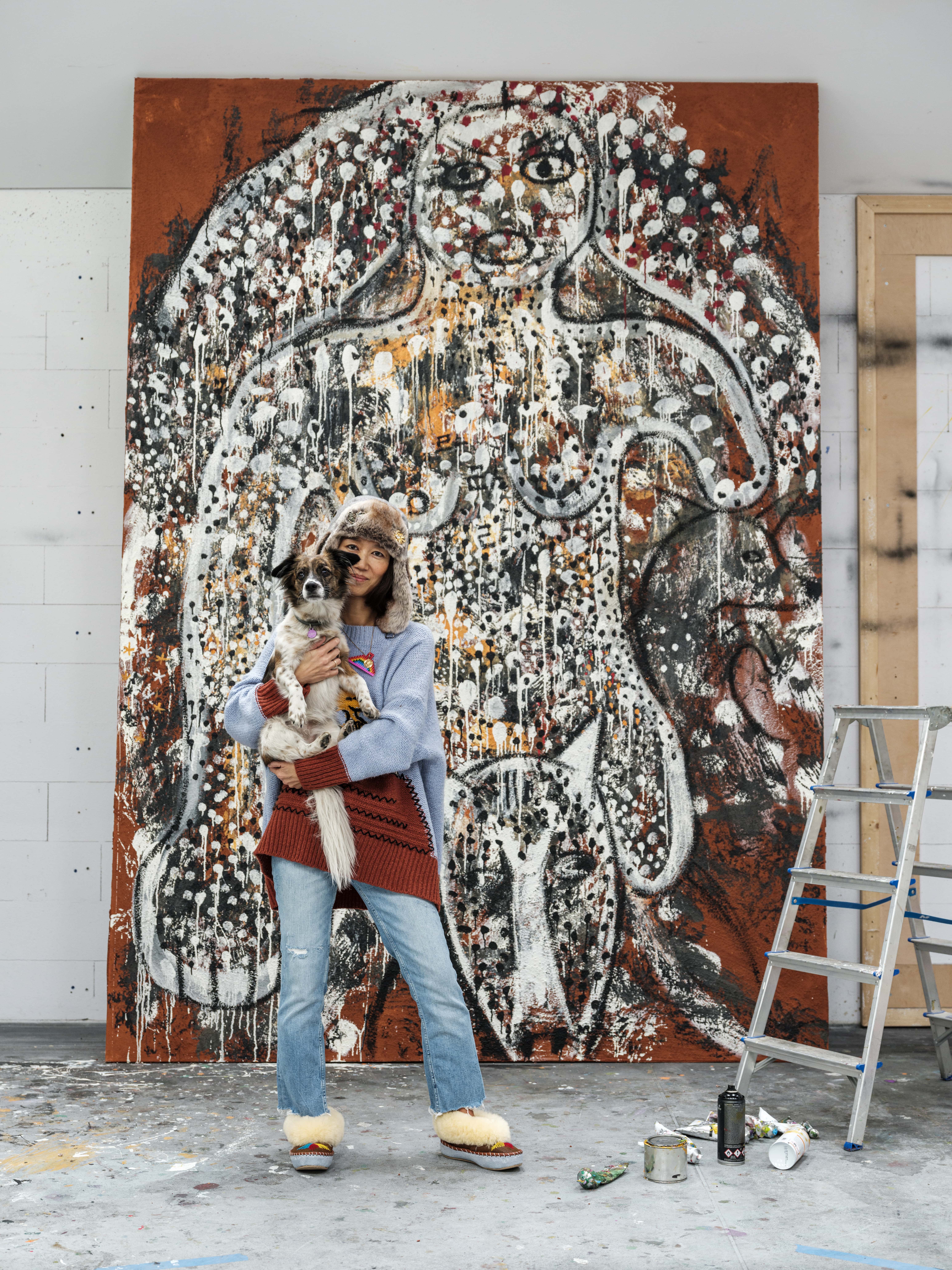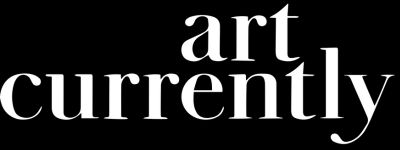Art & Korean Shamanism Converges in Si On’s New Show at James Fuentes

Photo of Si On in her studio.
By Mateusz Torbus.
A testament to the transformative and spiritual power of art, the new works of Si On's James Fuentes solo show "I Am An Outcast From The World" enables visitors to come face to face with fresh and formidable expressions of the good, the bad, and the ugly.
On view through March 19, the works possess a heavy portrayal of Korean Shamanism, making the art become what Si On describes as a healing ritual and a purification process. Through a method best described as sgraffito, a process where the artist utilizes unplanned, heavy layers of paint applied on canvas and then scraped or scrubbed away, the large scale paintings offer a place for the surfacing of deep-seated and unseen emotions that are both intimate and universally relatable.
She channels emotions that may be culturally perceived as unfavorable, such as fear, anger, and grief, and allows them to coexist with more positive emotions. This process liberates energy and enables opposing forces to cohabitate, from humor to tragedy, birth to death. For Si On, "...the primal power of shamanism corresponds to the hidden power of art. I work with the hope that my art also has this kind of strength. The same can be said about shamanism itself—it still exists today because many people still need it."
Si On's art is a product of first-hand experiences and struggles. After relocating from New York to a small town in Poland, she found herself unable to communicate or connect with her surroundings. This sense of confinement is reflected in her work, which often bursts with frustration while occupying cheerful hues. Si On's art is a nomadic aesthetic demonstrating a self constantly split open in response to the world.
Art Currently caught up with Si On in a bid to share more about her new presentation at James Fuentes. Read below as she discusses "I Am An Outcast From The World," Korean shamanism, and its influence.

Si On - Red Bamboo, 2021
Oil and spray on canvas (92 1/2 × 236 1/4 in | 235 × 600.1 cm)
1. What brought you to Korean shamanism?
The reason why Shamanism still exists, even after being treated with contempt and persecution, is because of shamans’ strength, power, and involvement in all phases of people’s livesㅡtriumphs and tragedies, from birth to death. It also plays such a large role in negative parts of life like sadness, death, disease, hatred or jealousy.
I became interested in underprivileged people in society, which led to my interests in the lives of shamans and Korean women in the past. Shamanism is deeply rooted in Korean society because people desperately need it; it represents salvation for those who need and believe in it. Similarly, I believe art exists for those who believe in its power. This is quite a simple and spiritual attitude towards my work that I always keep in mind.
2. Could you talk about why it's important for you to paint the culturally considered "ugly" or angst one may have or deal with?
By painting subjects that are traditionally considered unattractive or taboo, it is a way of challenging societal norms and expectations of beauty and acceptability. Dealing with angst or difficult emotions can create empathy and understanding for those who are struggling with similar issues.
I find catharsis and healing through the creative process. I can explore the complexities and nuances of the human condition, including the darker aspects of human experience.
3. Has unconscious painting always been a part of your practice? When did it start?
I do not plan the painting in advance, but rather allow it to unfold spontaneously. So in that way unconsciousness has always been a part of my practice. Even if I plan in advance it always goes in an unexpected way. It is probably in the process of painting that I seek to tap into my deepest emotions, desires, and fears; expressing them through the act of painting. It’s the way of accessing my inner world and expressing it in a raw and unfiltered way. It is a cathartic and liberating process for me; allowing myself to explore my emotions and experiences in a safe and creative way.
I believe that spontaneity, intuition, and expression can be a powerful and transformative experience for myself and the viewer.
4. Talk about your move from New York to Poland - was there a type of awakening you felt with deep isolation at hand? Did this change your practice/approach?
Moving from a vibrant city to a more isolated location can be a significant change for anyone. It has changed a lot in my practice since I moved to Poland for sure. The new environment led to a shift in styles in my practice but I think in a way it doesn’t matter where you live - it matters where you look or who you involve, how you awaken yourself even in the same environment. Artists are very flexible and flow with their ideas through their own experiences.
However, this change also provided a sense of renewal and inspiration to me. I tried to adapt my approach to working by finding new materials or resources and adjusting to a new environment. That was challenging but also stimulating, exciting. It led to introspection, self-discovery, and new ideas. I learned new ways of working and problem-solving.

